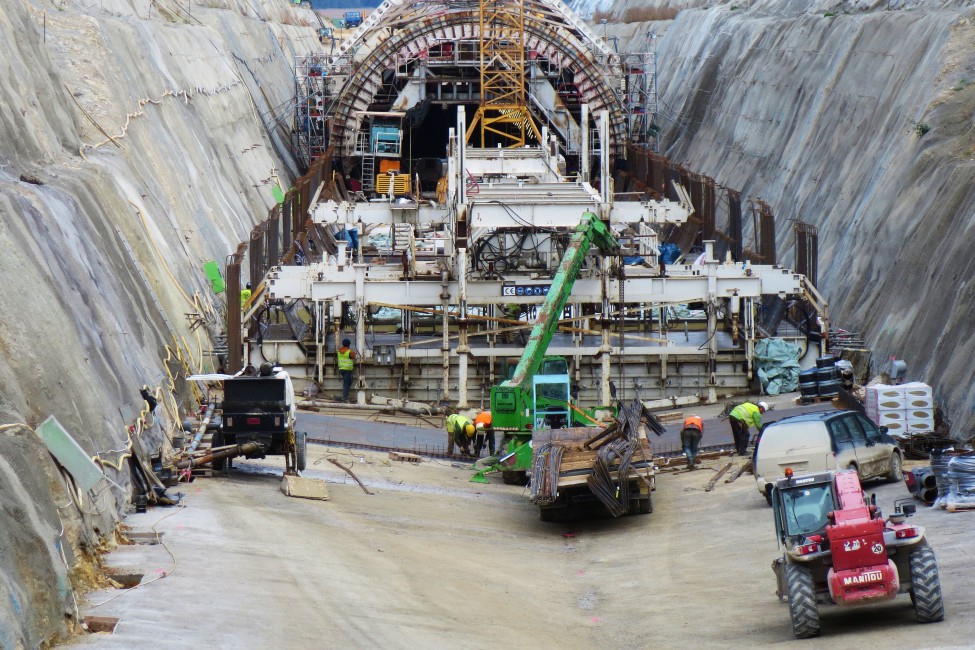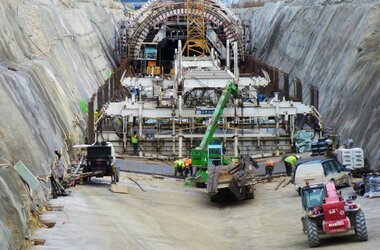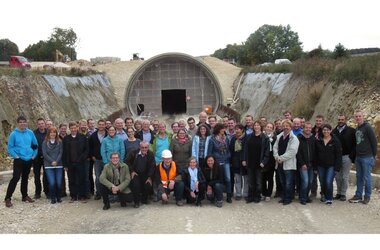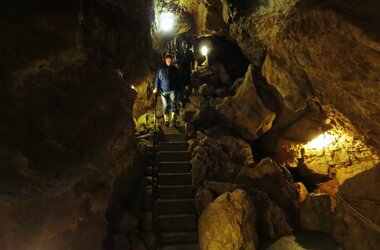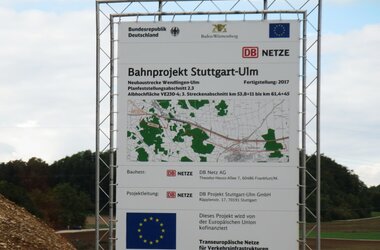Excursion to the underworld
The geology of the largest karst area in Germany, the Schwabian Alb, was the focus of this year’s works outing for the southern branches of KREBS+KIEFER. After the labyrinth of passageways of the Laichingen Tiefenhöhle cave, they visited the construction site of the new Stuttgart–Ulm stretch, for which KREBS+KIEFER is currently providing local on-site supervision.
The geology of the largest karst area in Germany, the Schwabian Alb, was the focus of this year’s works outing for the southern branches of KREBS+KIEFER. After the labyrinth of passageways of the Laichingen Tiefenhöhle cave, they visited the construction site of the new Stuttgart–Ulm stretch, for which KREBS+KIEFER is currently providing local on-site supervision.
The Laichingen Tiefenhöhle cave, at 86 m under ground level, is the deepest freely accessible karst cave in the Schwabian Alb. Male and female colleagues from Karlsruhe, Freiburg and Stuttgart, divided into small groups, were able to get their own idea of the subterranean system of passages washed out by the ground water. The museum connected to the cave provided a vivid overview of the history of this natural monument. Afterwards, the participants enjoyed a rest from the excursion and sampled regional specialities from an extensive lunch menu.
The technical problems posed by the karst geology was the most important feature of the afternoon: under the guidance of our own Dipl.-Ing. Udo Hoffmann, supervisor in charge of planning approval section 2.3 of the new Wendlingen–Ulm stretch, various construction sites forming part of the A 8 expansion and the new railway line were visited.
The route planning for the highway and the largely parallel tracks required a number of engineering works over a distance of 21 km, some of them extensive and far-reaching. Certainly the most imposing in this section, the 962-metre long, double-track Widderstall railway tunnel, has been completed in large parts. Overall, all those involved were able to get a good picture of the many activities carried out by KREBS+KIEFER in this centenary project.
